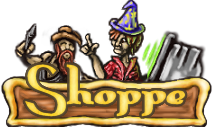I want to release simple resource tool for Haven. Just run, select local or remote resource (for remote resource it should be like 'gfx/terobjs/cupboard') and edit everything you want (and can be edited).
You can easily change text, toolips, images, textures (for example), etc. You can also remove some layers from resources: annoying sounds (audio2), mesh animations like bees on beehives (manim), totally remove bees from beehives (mesh), remove texture rotation animation from fireplaces (texrot sublayer of mat2), remove skeleton animation of animals or dreamcatchers (skan). Save resource and place into your client, usually it is like '%CLIENT_FOLDER%/res/gfx/terobjs/cupboard.res'.
Note: for code layer you need java to be in you PATH.
You can also edit 3D models, but it is a bit tricky and have several restrictions. First of all, I cannot understand this BEST CODE I HAD SEEN EVER, and I'm also not good in 3D.
Here are restrictions:
- resource must have exactly 1 mesh layer, even with the mesh layers with same id, I don't know how to load them back properly. Maybe some day loftar will explain how this magic works;
- vbuf2 layer must have exactly 3 sublayers: nrm, pos, tex. I don't know how to properly export other sublayers into OBJ format, or they not supported by OBJ.
Editing 3D model:
- open resource and go to vbuf2 layer
- press 'Export to obj' button, model will be saved into 'obj' folder of this tool
- if resource contains tex layer, go to tex layer and save resource texture
- open Blender and import model from obj wavefront format
- apply texture on model if any
- change something
- export into OGRE format (you must have export plugin for this)
- save texture separately if any
- open resource tool, press 'Import from XML' button and select OGRE XML changed model
- go to tex layer and change texture if any
- dont forget to save resource
Download tool (windows)
Source code
Tool written with C++ using Qt library. Download Qt for your platform and open project file from QtCreator. For console mode cd into project folder, run qmake then make. Make sure qmake and make in your PATH.
Enjoy!


